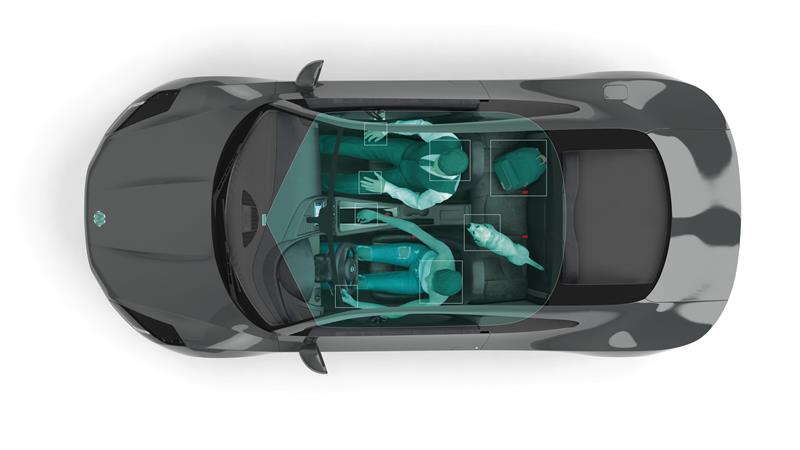The sensor portfolio now includes next-generation QVGA ToF sensor chipsets and there are plans for a VGA ToF sensors. According to Melexis these developments will enable it to further support its automotive customers in the development of advanced in-cabin sensing solutions.
Q: What current issues are autonomous vehicles facing that advanced sensors could resolve?
A: Sensors are now a vital part of any modern automobile design, serving many different purposes. They are instrumental in helping car manufacturers to bring models to market that are safer, more fuel efficient and more comfortable to drive. Over time, sensors will also enable greater degrees of vehicle automation, which the industry will benefit from. Besides full controllability and data processing, intelligent observability is one of the prerequisites to enable a car to take action on its own.
The next generation sensors will be providing a clear, constantly updated picture of what is happening, both in relation to the external environment and in terms of what their occupants are doing too. Sensing technologies therefore hold the key to the future of the automotive industry.
Q: Which sensors would you say are crucial for level 5?
A: To attain the objective of full observability cars will need to process a wide variety of parametric data - including speed, current, pressure, temperature, positioning, proximity detection, gesture recognition, etc.
Q: What is Time of Flight (ToF) sensor technology and how does it work?
A: ToF describes a type of sensor that uses an optical emitter and receiver to determine the distance of an object from the sensor. The scene is flashed by modulated light and all pixels in the receiver measure the amplitude and phase delay of the returned light. As the speed of light is a known constant, the differences between the signal leaving the emitter and the signal that is reflected back to the receiver can be used to accurately calculate the distance between the sensor and the object.

For further information please check Melexis' Time of Flight Application Note here.
Q: What benefits can it offer alongside or even over alternative sensors?
A: A key benefit of ToF is the capability to get a high-resolution 3D rendering of the scene. On top of the shape of visible objects provided by conventional image sensor, ToF provides the position of the object in the space without requiring intensive computing and regardless of visible patterns and the image contrast.
Q: Do you believe this is the key to unlocking fully automated cars and why?
A: No, it is the key enabler on its own. Other key technologies are needed to enable full autonomous vehicles. ToF is very useful to monitor what's going on inside the vehicle in order to ensure safety and comfort of the passengers. Another area where ToF can contribute to improve the reliability of Autonomous vehicles is the high-resolution 3D rendering of the vehicle surrounding area in order to e.g. detect the presence of obstacles or people which cannot be easily detected and properly classified by other sensor like Radar or camera.
Q: Is this a new technology? What makes your latest developments in ToF better than previous launches? What has been added/is different to competitors?
A: This is not a new technology for Melexis. We are working on ToF since 2004. The new generation QVGA ToF sensor is in “simple words” two times better. The new sensor is over twice as sensitive and has selectable gains, so its low light and long-range performance has improved. The sensor itself has now an embedded temperature sensor and reduced power dissipation (50% lower than previous generation) and it has been optimised for 940nm light sources which is better suited for outdoor application (sunlight is less strong around 940nm). The new companion chip includes a power-up circuit to further simplify the power supply unit and four GPO (General Purpose Outputs) which can be used e.g. to select the ToF sensor, allowing to use only one companion chip to manage several ToF sensor.
Q: Are you doing any other work in sensor technology in the automobile sector?
A: Of course, we are one of the four world leaders in automotive semiconductor sensors and a leading player in integrated circuits for motor driving, magnetic position sensors, Latch&Switch solutions, ambient lighting, rain/light sensors, temperature sensors, Time-of-Flight solutions and pressure sensors. We play a strong role in developing new products and categories and we keep a close eye on the rapidly evolving industry needs. For example, we are pioneers in 3D magnetic Hall effect sensors, and we constantly improve production capabilities for sensor assemblies and modules.
Q: Is there any way we will ever see a single sensor technology that fuses all the benefits of current technology in one device?
A: On the one hand it is not technically possible to fuse ToF, camera, radar and LIDAR (and potentially FIR) and on the other hand, it is probably not desirable even if it would be hypothetically feasible. The different technologies have different physical properties. The fusion of those different physics creates the fundamental strength (called heterogenous redundancy) that is required for such safety levels like L4-L5 ADAS.
Concluding the conversation, Bagnuoli said:
"After the world’s first ToF generation was launched by Melexis in 2014, this next generation of our QVGA ToF chipset offers significant performance advantages, particularly with respect to improved sensitivity, greater integration, extended functionality and reduced power consumption. A common footprint with earlier generations allows existing customers to upgrade easily, while a comprehensive evaluation kit reduces time-to-market for designers developing solutions for new projects and enables significant cost savings. The new automotive integrated VGA ToF sensor incorporates our significant know-how in ToF technology and demonstrates our commitment to support our customers to the fullest."













